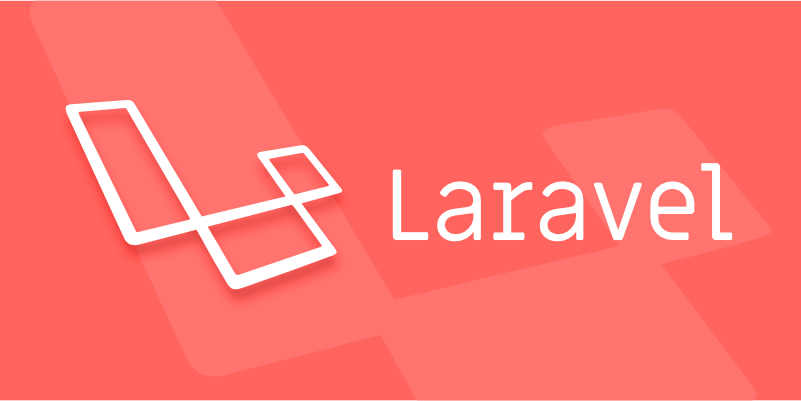Implementing One-to-Many Relationships with Laravel Eloquent
Jul 12, 2025 am 12:09 AMTo set up a one-to-many relationship in Laravel Eloquent, first create two database tables with a foreign key on the "many" side (e.g., user_id in the posts table), then define the relationship using hasMany() in the "one" model (e.g., User) and belongsTo() in the "many" model (e.g., Post), next query related data using dynamic properties or query constraints while avoiding N 1 issues via eager loading (with()), and finally create or update related records using save(), createMany(), or update() methods on the relationship instance.

When you're working with Laravel and need to connect one model to multiple others—like a user having many posts or a category containing many products—you're dealing with a one-to-many relationship. Laravel Eloquent makes this pretty straightforward, but there are a few key things to get right.

Setting Up the Database Tables
Before diving into models, make sure your database structure supports the relationship.

You’ll typically have two tables: the "one" side and the "many" side. For example, if you’re connecting users to posts, you'll have a users table and a posts table. The posts table should contain a foreign key that references the users table—usually user_id.
Here’s a basic example of what the migration for posts might look like:

Schema::create('posts', function (Blueprint $table) {
$table->id();
$table->foreignId('user_id')->constrained()->onDelete('cascade');
$table->string('title');
$table->text('content');
$table->timestamps();
});This sets up the foreign key and ensures it's tied directly to a user.
Defining the Relationship in Models
Once the tables are set up, define the relationship in your models.
In the User model, you’ll use the hasMany() method to indicate that a user can have many posts:
class User extends Model
{
public function posts()
{
return $this->hasMany(Post::class);
}
}And in the Post model, you’ll define the inverse using belongsTo():
class Post extends Model
{
public function user()
{
return $this->belongsTo(User::class);
}
}Eloquent assumes the foreign key is based on the model name (user_id in this case), so as long as your column matches that convention, everything works out of the box.
If your foreign key doesn't follow the convention—say you used author_id instead—you’d need to specify it explicitly:
return $this->hasMany(Post::class, 'author_id');
Querying Related Data
Now that the relationships are defined, querying becomes much more intuitive.
To get all posts from a specific user:
$user = User::find(1); $posts = $user->posts;
Or, if you want to find a post and see who the author is:
$post = Post::find(5); $user = $post->user;
You can also add constraints when fetching related data:
$user->posts()->where('published', true)->get();One thing to watch out for is N 1 query issues. If you loop through many users and access their posts each time, it could generate a lot of queries. To avoid that, use eager loading:
$users = User::with('posts')->get();This way, Laravel fetches all related posts in one go, which is much more efficient.
Creating and Updating Related Records
Creating related records is simple once the relationship is set up.
You can use the save() method on the relationship:
$post = new Post(['title' => 'My First Post', 'content' => 'Hello world!']); $user->posts()->save($post);
This automatically sets the user_id on the post.
You can also create multiple at once:
$user->posts()->createMany([
['title' => 'First Post', 'content' => 'Hello again'],
['title' => 'Second Post', 'content' => 'Still learning']
]);When updating, you can work directly with the related model:
$post = $user->posts()->find(1); $post->update(['title' => 'Updated Title']);
Just remember: always make sure you're working with the correct instance and that the relationship exists before trying to update or delete.
That’s the core of setting up and working with one-to-many relationships in Laravel Eloquent. It’s not overly complex, but getting the setup right early on avoids headaches later.
The above is the detailed content of Implementing One-to-Many Relationships with Laravel Eloquent. For more information, please follow other related articles on the PHP Chinese website!

Hot AI Tools

Undress AI Tool
Undress images for free

Undresser.AI Undress
AI-powered app for creating realistic nude photos

AI Clothes Remover
Online AI tool for removing clothes from photos.

Clothoff.io
AI clothes remover

Video Face Swap
Swap faces in any video effortlessly with our completely free AI face swap tool!

Hot Article

Hot Tools

Notepad++7.3.1
Easy-to-use and free code editor

SublimeText3 Chinese version
Chinese version, very easy to use

Zend Studio 13.0.1
Powerful PHP integrated development environment

Dreamweaver CS6
Visual web development tools

SublimeText3 Mac version
God-level code editing software (SublimeText3)

Hot Topics
 What are routes in Laravel, and how are they defined?
Jun 12, 2025 pm 08:21 PM
What are routes in Laravel, and how are they defined?
Jun 12, 2025 pm 08:21 PM
In Laravel, routing is the entry point of the application that defines the response logic when a client requests a specific URI. The route maps the URL to the corresponding processing code, which usually contains HTTP methods, URIs, and actions (closures or controller methods). 1. Basic structure of route definition: bind requests using Route::verb('/uri',action); 2. Supports multiple HTTP verbs such as GET, POST, PUT, etc.; 3. Dynamic parameters can be defined through {param} and data can be passed; 4. Routes can be named to generate URLs or redirects; 5. Use grouping functions to uniformly add prefixes, middleware and other sharing settings; 6. Routing files are divided into web.php, ap according to their purpose
 What are policies in Laravel, and how are they used?
Jun 21, 2025 am 12:21 AM
What are policies in Laravel, and how are they used?
Jun 21, 2025 am 12:21 AM
InLaravel,policiesorganizeauthorizationlogicformodelactions.1.Policiesareclasseswithmethodslikeview,create,update,anddeletethatreturntrueorfalsebasedonuserpermissions.2.Toregisterapolicy,mapthemodeltoitspolicyinthe$policiesarrayofAuthServiceProvider.
 How do I create new records in the database using Eloquent?
Jun 14, 2025 am 12:34 AM
How do I create new records in the database using Eloquent?
Jun 14, 2025 am 12:34 AM
To create new records in the database using Eloquent, there are four main methods: 1. Use the create method to quickly create records by passing in the attribute array, such as User::create(['name'=>'JohnDoe','email'=>'john@example.com']); 2. Use the save method to manually instantiate the model and assign values ??to save one by one, which is suitable for scenarios where conditional assignment or extra logic is required; 3. Use firstOrCreate to find or create records based on search conditions to avoid duplicate data; 4. Use updateOrCreate to find records and update, if not, create them, which is suitable for processing imported data, etc., which may be repetitive.
 How do I run seeders in Laravel? (php artisan db:seed)
Jun 12, 2025 pm 06:01 PM
How do I run seeders in Laravel? (php artisan db:seed)
Jun 12, 2025 pm 06:01 PM
Thephpartisandb:seedcommandinLaravelisusedtopopulatethedatabasewithtestordefaultdata.1.Itexecutestherun()methodinseederclasseslocatedin/database/seeders.2.Developerscanrunallseeders,aspecificseederusing--class,ortruncatetablesbeforeseedingwith--trunc
 What is the purpose of the artisan command-line tool in Laravel?
Jun 13, 2025 am 11:17 AM
What is the purpose of the artisan command-line tool in Laravel?
Jun 13, 2025 am 11:17 AM
Artisan is a command line tool of Laravel to improve development efficiency. Its core functions include: 1. Generate code structures, such as controllers, models, etc., and automatically create files through make: controller and other commands; 2. Manage database migration and fill, use migrate to run migration, and db:seed to fill data; 3. Support custom commands, such as make:command creation command class to implement business logic encapsulation; 4. Provide debugging and environment management functions, such as key:generate to generate keys, and serve to start the development server. Proficiency in using Artisan can significantly improve Laravel development efficiency.
 How do I install Laravel on my operating system (Windows, macOS, Linux)?
Jun 19, 2025 am 12:31 AM
How do I install Laravel on my operating system (Windows, macOS, Linux)?
Jun 19, 2025 am 12:31 AM
Yes,youcaninstallLaravelonanyoperatingsystembyfollowingthesesteps:1.InstallPHPandrequiredextensionslikembstring,openssl,andxmlusingtoolslikeXAMPPonWindows,HomebrewonmacOS,oraptonLinux;2.InstallComposer,usinganinstalleronWindowsorterminalcommandsonmac
 How do I define methods (actions) in a controller?
Jun 14, 2025 am 12:38 AM
How do I define methods (actions) in a controller?
Jun 14, 2025 am 12:38 AM
Defining a method (also known as an action) in a controller is to tell the application what to do when someone visits a specific URL. These methods usually process requests, process data, and return responses such as HTML pages or JSON. Understanding the basic structure: Most web frameworks (such as RubyonRails, Laravel, or SpringMVC) use controllers to group related operations. Methods within each controller usually correspond to a route, i.e. the URL path that someone can access. For example, there may be the following methods in PostsController: 1.index() – display post list; 2.show() – display individual posts; 3.create() – handle creating new posts; 4.u
 How do I run tests in Laravel? (php artisan test)
Jun 13, 2025 am 12:02 AM
How do I run tests in Laravel? (php artisan test)
Jun 13, 2025 am 12:02 AM
ToruntestsinLaraveleffectively,usethephpartisantestcommandwhichsimplifiesPHPUnitusage.1.Setupa.env.testingfileandconfigurephpunit.xmltouseatestdatabaselikeSQLite.2.Generatetestfilesusingphpartisanmake:test,using--unitforunittests.3.Writetestswithmeth






